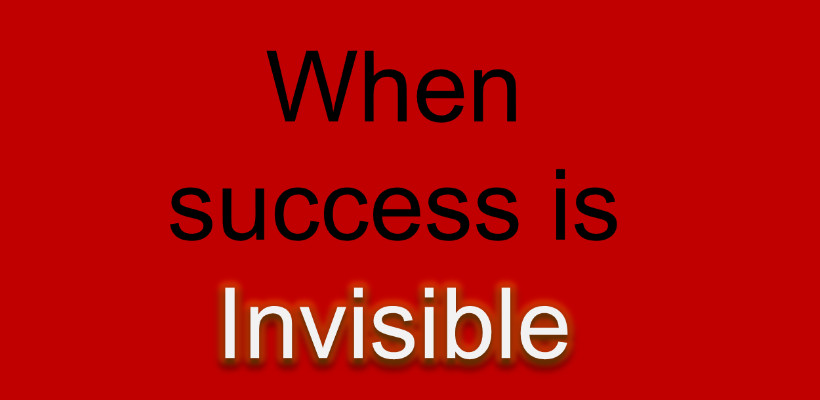
Many will agree that sometimes it's difficult to articulate the role that good communication, or the lack of it, played in the success or failure of a business initiative. As much as I strongly believe that communication is the glue that connects the dots between strategy and results, it can be intangible.
Not many of us have the luxury of creating a lab environment where we have a control group with no communication working in parallel to a group that benefited from communication expertise. I wonder, if we did, what we'd discover.
Upon reflection, it also dawned on me, that what I do, often means nothing happens and everything goes smoothly according to plan. Proactive communication can help an organization avoid crisis and allow employees to continue on their path to deliver their planned goals undeterred.
Let me give you just a few examples of invisible success from my own experience.
When one company was acquired by another
What happened? During a proxy battle that lasted almost eight months, I worked closely with leaders to help employees focus on results amidst uncertainty. Employees focused on the things that would remain the same regardless of whether the merger went through or not - customer, community and competitors. As a result, the Canadian division had it's best ever annual and quarterly results in the company's history.
What didn't? Employees weren't distracted or paralyzed by fear.
When a company chose to divest and sell a business division
What happened? I worked closely with HR and the business to communicate the reason for the divestiture and why it was an opportunity for those who would be leaving one company and joining another. All sales employees signed contracts with the new organization within a week. The president of the acquiring organization was blown away at how smoothly the initial transaction went.
What didn't? Sales employees didn't choose to delay their decisions. Employees who saw colleagues leave were sad but understood why and didn't lose trust in the organization.
When a company went through a massive reorganization
What happened? Communication was managed proactively at all levels of the organization from leadership to manager to individual contributor. Everyone understood their roles and messages and the connection of how and why the reorganization was consistent with the company's strategy and values. We then painted a picture of the plans for the future. Employees, even those leaving, sent messages to the president, thanking him for his honesty and courage. Employees were able to focus on finishing the year successfully.
What didn't? Employees were not paralyzed by fear and were given time to grieve and then get back to the job at hand as quickly as possible.
When an organization launched a new brand
What happened: We did our research, engaged constituents, listened and answered their concerns, and created a holistic brand that articulated both the visual identity and brand personality of the organization. We also provided tools and templates to help them with implementation. Brand adoption was smoother than expected despite the noise initially heard against the re-branding effort.
What didn't: There was no backlash to the new brand once launched and those who needed to, didn't proactively choose to ignore the new guidelines as they had done with previous versions.
There have been various studies about the number of change and business projects that fail due to lack of communication and employee engagement. Companies spend incredible amounts of money ensuring they've planned the perfect strategies, purchased the right technologies, launched beautiful brands, and created efficient processes, but then fail to invest in the one piece that could ensure that these programs are successful.
The next time you're ready to launch a new program or change initiative, ask yourself about the cost of failure and how much you'd be willing to invest in true meaningful success...even if that success means everything simply goes according to plan.
Do you have an example of when good communication led to success that was invisible?
If you found this post helpful, you’ll also enjoy our newsletter. It’s a monthly collection of ideas, resources, and inspiration for those passionate about enabling, engaging and empowering employees through strategic internal communication.